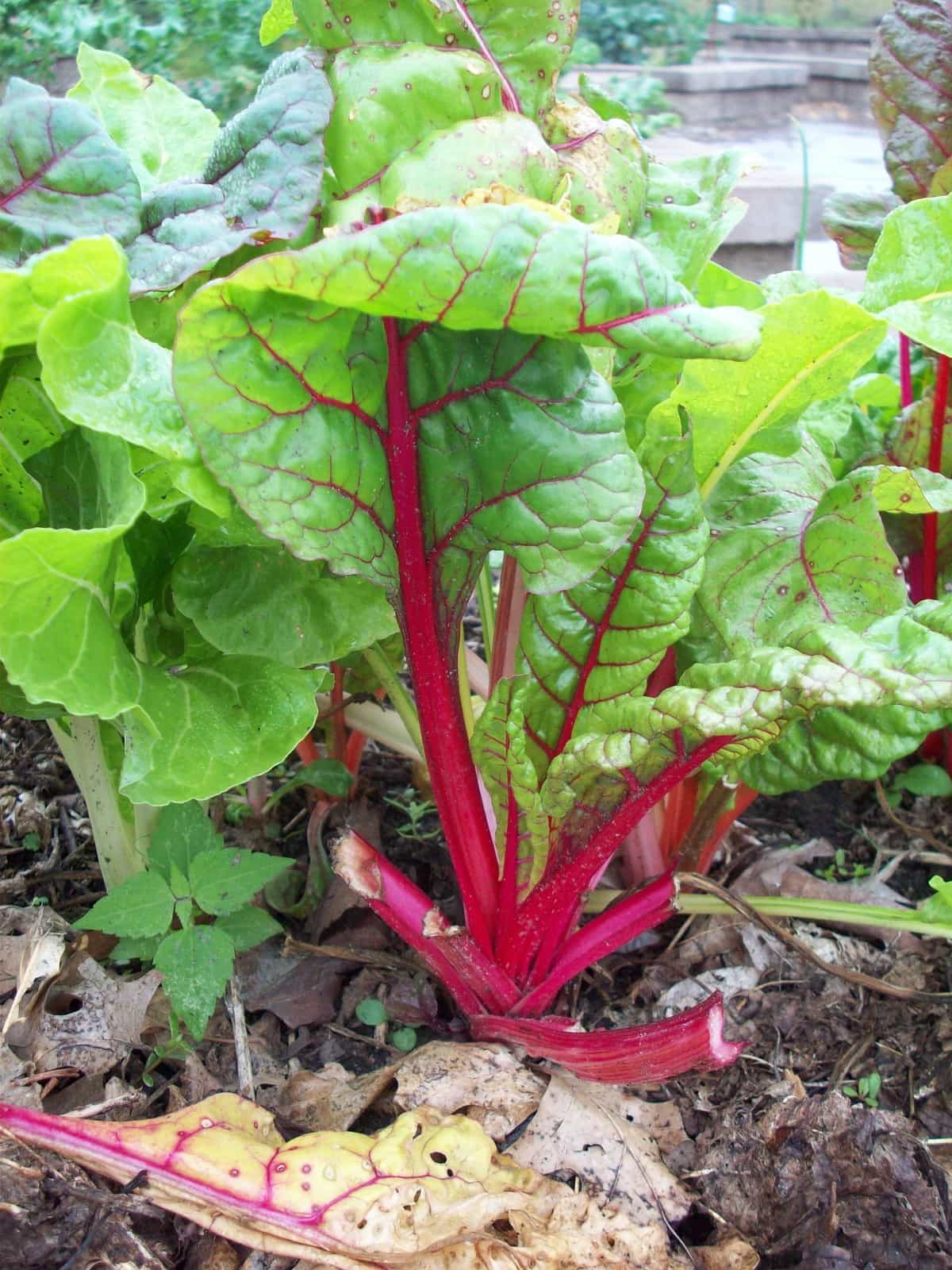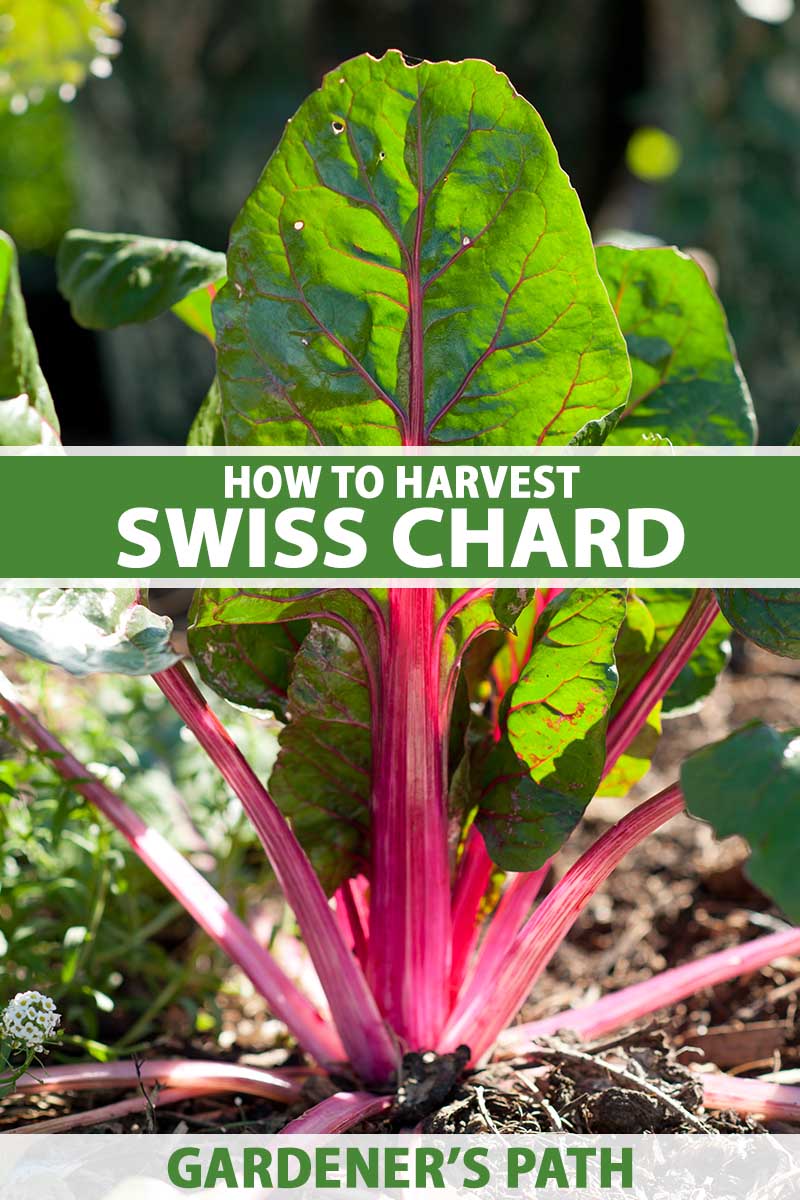To harvest chard, cut off the outer leaves close to the base of the plant. Chard is a nutritious leafy green vegetable that is easy to grow and harvest in your garden.
Known for its vibrant colors and earthy flavor, chard is a versatile ingredient that can be used in a variety of dishes. Whether you want to enjoy it in a salad, sauté it as a side dish, or add it to soups and stews, harvesting chard is a simple process.
By following a few easy steps, you can ensure that you are harvesting your chard at the right time and in the correct way. We will discuss the best methods for harvesting chard and how to prolong its shelf life to enjoy it for longer. So let’s dive in and learn all about harvesting chard!

Credit: harvesttotable.com
Ideal Conditions For Harvesting Chard
Chard, also known as Swiss chard or silverbeet, thrives in cool weather conditions. It prefers temperatures ranging from 50 to 75 degrees Fahrenheit (10 to 24 degrees Celsius). Chard is a hardy plant that can withstand light frost, making it suitable for both spring and fall harvests. It is important to note that chard grows best during the cooler months of the year.
When harvesting chard, it is crucial to recognize the right time when the leaves are mature and ready for picking. Mature chard leaves are dark green in color, glossy, and have a crisp texture. They should be free from pests and diseases, while the stems are firm and not wilted. To check for maturity, simply examine the leaves and ensure they meet these criteria. Harvesting chard at the right stage of maturity not only ensures optimal taste but also encourages the growth of new leaves for continuous harvesting.
Necessary Tools And Equipment
To successfully harvest chard, you will need a few essential tools and equipment. These include a sharp knife or scissors, gloves, a bucket or container for gathering the chard, and a garden fork or shovel for loosening the soil around the plants.
- Essential gardening tools: To harvest chard effectively, you will need a few important gardening tools. These include a garden fork, a hand trowel, and a pair of sharp gardening shears. The fork is useful for loosening the soil around the chard roots, while the trowel is ideal for removing any weeds or unwanted plants.
- Protective gear: It is crucial to prioritize your safety while harvesting chard. Wearing protective gear such as sturdy gloves and safety goggles will shield your hands and eyes from any potential injuries. The gloves ensure that you maintain a firm grip on the tools, and the goggles protect your eyes from any flying debris.
- Proper clothing for outdoor harvesting: Dressing appropriately for the outdoors is important when harvesting chard. Opt for long pants and a long-sleeved shirt to protect your legs and arms from scratches or insect bites. Additionally, wearing closed-toe shoes with good traction will provide stability on uneven ground.
Step-by-step Process Of Harvesting Chard
To harvest chard, start by preparing the plants. Gently loosen the soil around the base of the plant with a garden fork, taking care not to damage the roots. Next, choose whether to harvest individual leaves or the entire plant.
If you prefer to harvest individual leaves, simply grasp the base of a leaf near the soil and pull it from the plant. Take care not to disturb the neighboring leaves. Harvesting this way allows the plant to continue growing and producing more leaves for future harvests.
If you want to harvest the entire plant, use a sharp knife or shears to cut the chard at the base, leaving about an inch of stem attached. Be sure to harvest before the plant bolts or produces flowers, as this can negatively affect the taste and texture of the chard.
When harvesting, it’s important to avoid damage to the plant to ensure its continued growth. Take care not to trample or step on the plant, as this can cause injury or inhibit regrowth. Harvesting chard properly will allow for a bountiful and ongoing supply of this nutritious leafy green.
Preserving Harvested Chard
When you are ready to harvest your chard, it’s important to know the best practices for preserving its freshness and flavor. Cleaning and washing the leaves thoroughly is the first step in ensuring that your chard stays fresh for longer.
After cleaning the leaves, you can consider drying them. Lay the leaves out on a clean kitchen towel or paper towels to remove any excess moisture. This will also help prevent wilting.
When it comes to storing chard, it’s essential to use the right techniques to maximize its shelf life. Wrap the leaves in a damp paper towel and place them in a plastic bag or airtight container. This will help maintain their moisture and prevent them from drying out.
Additionally, storing chard in the refrigerator’s crisper drawer can further extend its lifespan. Just make sure to use the chard within a week to enjoy it at its best quality.
Delicious Culinary Options With Chard
Chard, also known as Swiss chard, is a versatile leafy green vegetable packed with nutrients. It can be used in a variety of delicious recipes and provides multiple health benefits.
Nutritional benefits of chard: Rich in vitamins A, C, and K, as well as minerals like magnesium and potassium, chard is a powerhouse of nutrients. It also contains antioxidants that promote good health and support a strong immune system.
Creative ways to incorporate chard in meals: Chard can be used in a variety of culinary creations. Here are some ideas:
| Recipes | Meal Ideas |
|---|---|
| Chard and Feta Stuffed Chicken Breast | Add chopped chard leaves to soups and stews for added nutritional value |
| Chard and Mushroom Quiche | Sautee chard with garlic and olive oil as a healthy side dish |
| Chard and Lentil Soup | Use chard leaves as a replacement for tortilla wraps in tacos or burritos |
Chard’s vibrant colors and unique flavor add excitement to any dish, making it a fantastic ingredient to experiment with in the kitchen.
Common Challenges And Mistakes To Avoid
One of the common challenges faced while harvesting chard is dealing with pests and diseases. These can include aphids, leaf miners, and powdery mildew. It is essential to keep an eye on your plants and take necessary measures such as using organic insecticides or practicing companion planting to prevent infestations and minimize the risk of disease.
Another mistake to avoid is over or under-harvesting chard. Harvesting too much can weaken the plant and reduce future yields, while not harvesting enough can lead to overcrowding and hinder growth. To ensure a healthy and continuous supply, selectively pick outer leaves and leave the inner ones intact.
Handling and storing errors can also impact the quality of harvested chard. Avoid rough handling that can bruise or damage the leaves. After harvesting, rinse the leaves thoroughly, gently pat them dry, and store them in a plastic bag with perforations to maintain freshness in the refrigerator.
Maintaining chard plants post-harvest is crucial for their continued growth. After each harvest, remove any debris or dead leaves to prevent the spread of diseases and encourage new growth. Additionally, providing adequate water, sunlight, and nutrients will help chard plants thrive and produce a bountiful harvest.
Frequently Asked Questions On How To Harvest Chard
How Do You Harvest Chard?
To harvest chard, start by using a sharp knife or shears to cut the outer leaves from the base of the plant. Leave the smaller inner leaves to continue growing. Cut the stalk about an inch above the soil. Rinse the leaves thoroughly and they’re ready to enjoy!
When Is The Best Time To Harvest Chard?
Chard is typically ready for harvest around 55 to 65 days after planting. You can start harvesting young leaves when they are around 6 to 8 inches tall. Harvest in the morning for the best flavor and crispness.
Can You Eat The Stalks Of Chard?
Yes, you can eat the stalks of chard. They have a slightly bitter taste, but when cooked, they soften and become tender. The stalks can be chopped and sautéed or steamed along with the leaves, or used in stir-fries and soups.
How Do You Store Harvested Chard?
To store harvested chard, first remove any damaged leaves. Rinse the chard thoroughly to remove any dirt or debris, then pat dry with paper towels. Place the chard in a plastic bag or airtight container and store it in the refrigerator.
It should stay fresh for up to a week.
Conclusion
Harvesting chard can be a rewarding experience for any gardener. By following the simple steps outlined in this blog post, you can ensure a bountiful harvest of this nutritious and delicious vegetable. Remember to harvest the outer leaves first and continue to care for the plant to encourage regrowth.
With proper care and attention, your chard plants will provide you with a continuous supply of fresh greens throughout the season. Happy harvesting!

